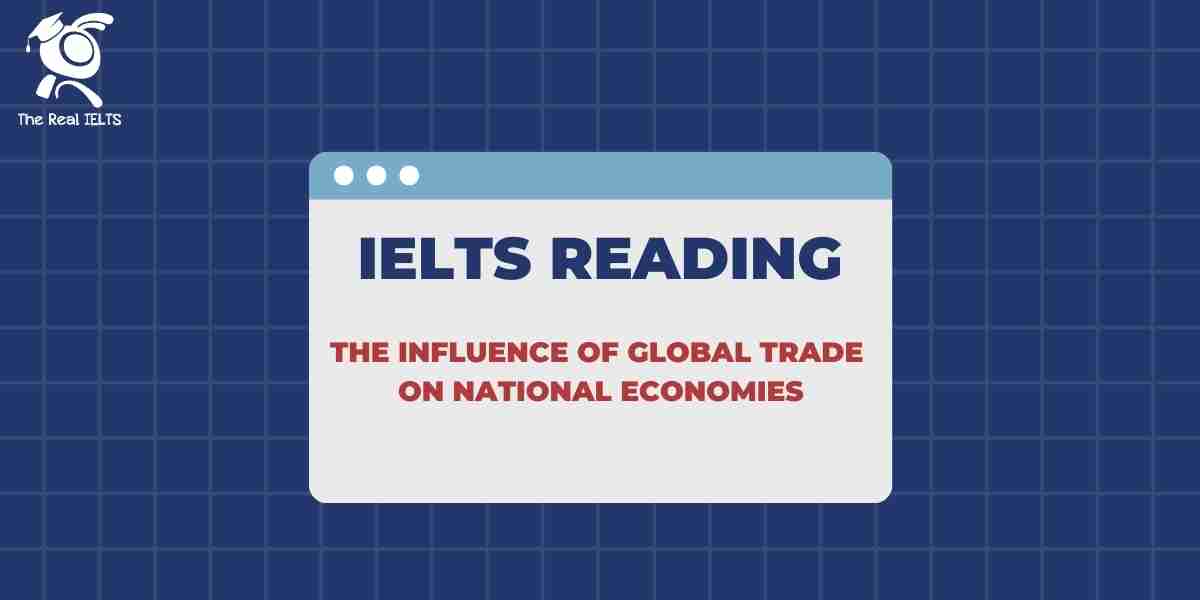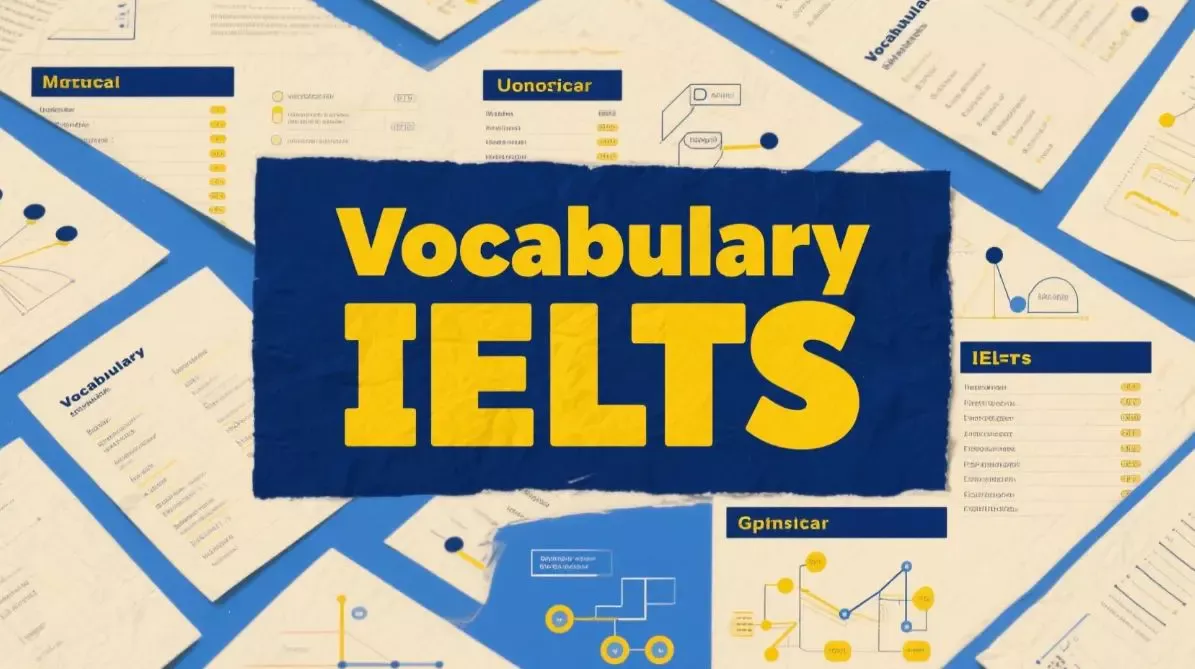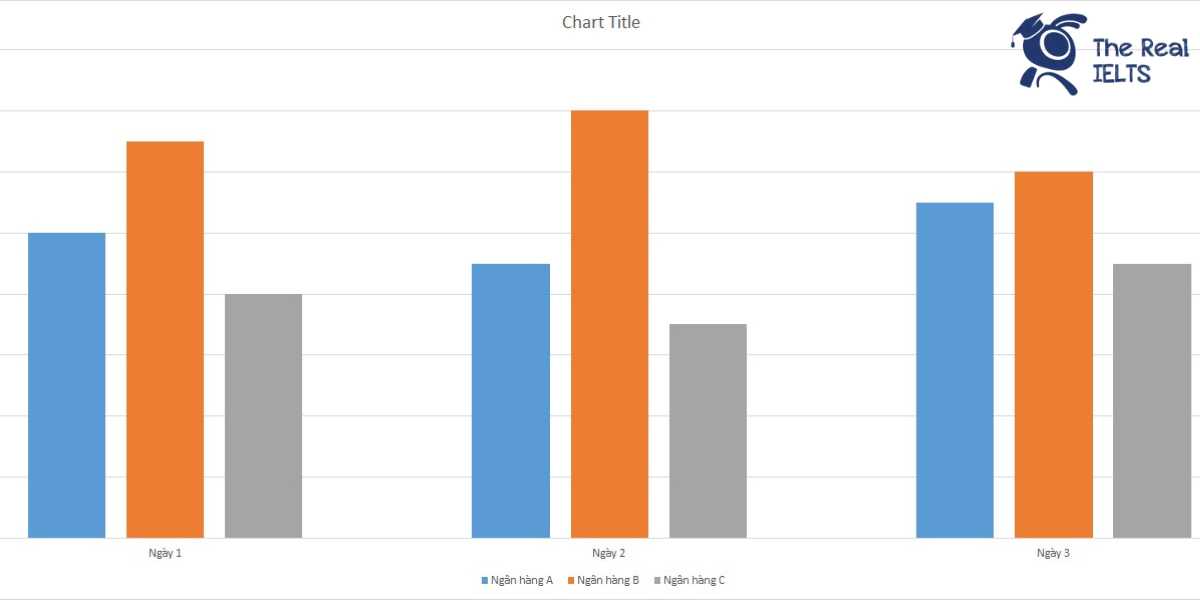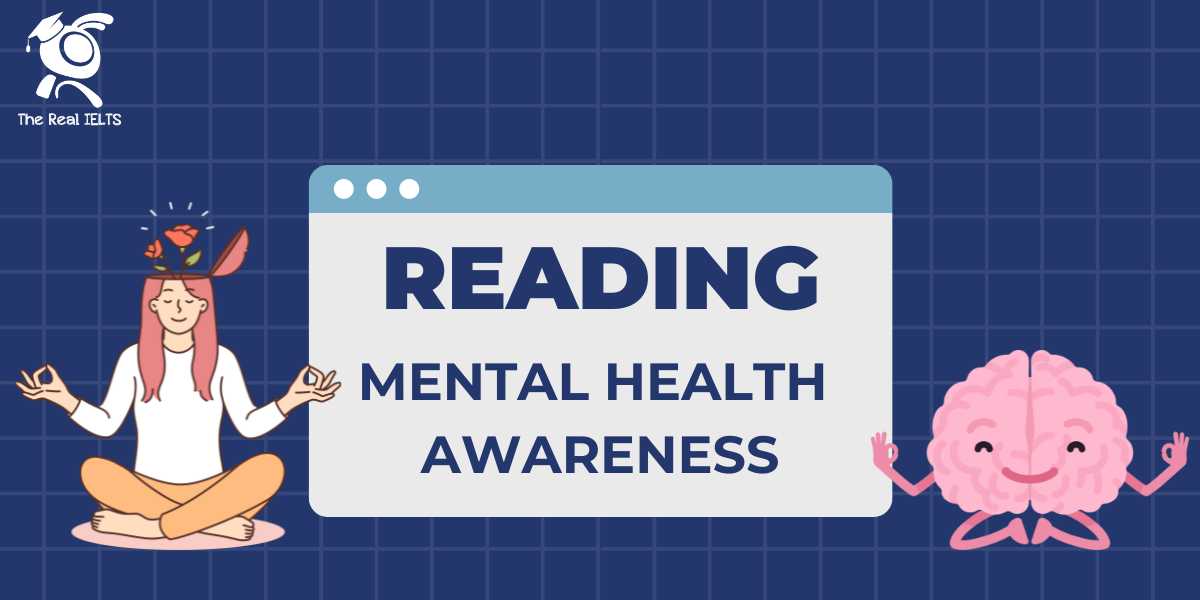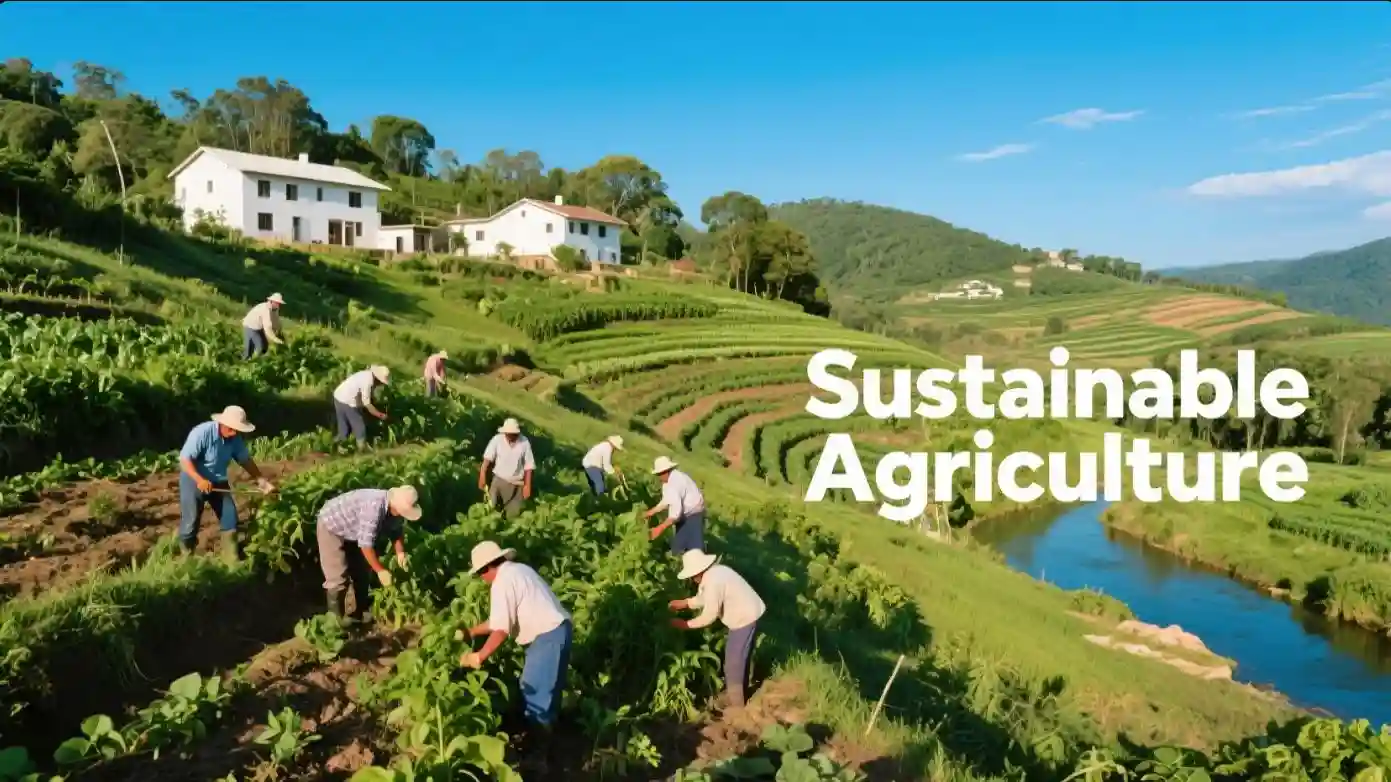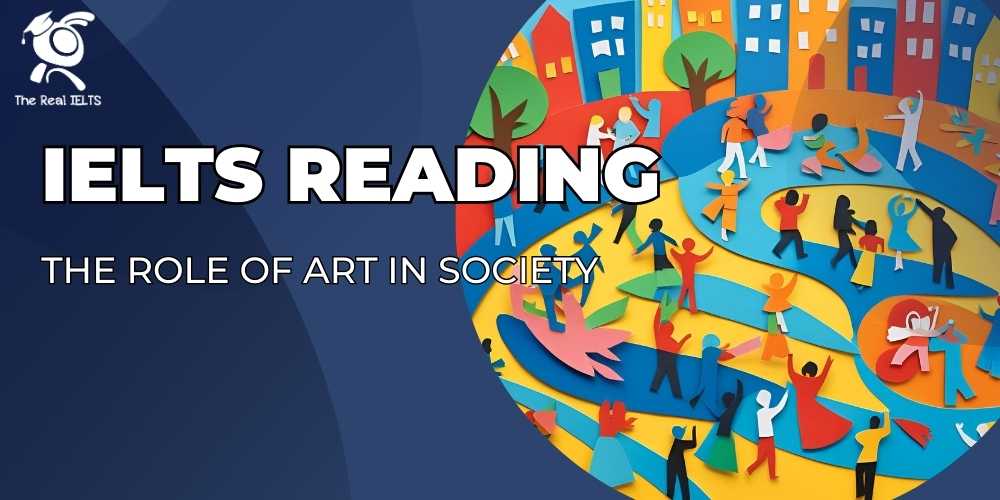Đề thi IELTS Reading có tiêu đề “The Influence of Global Trade on National Economies”
Nhớ đọc thêm các bài luyện thi IELTS nhé.
IELTS Reading:”The Influence of Global Trade on National Economies“
The Influence of Global Trade on National Economies
Global trade has long been recognized as one of the key drivers of economic development. It facilitates the exchange of goods, services, and capital across international borders, creating opportunities for countries to specialize in the production of specific goods where they hold a comparative advantage. This process not only increases efficiency and productivity but also fosters innovation and competitiveness within national economies. The impact of global trade on national economies is complex and multifaceted, influencing everything from GDP growth and employment rates to the structure of industries and governmental policies.
One of the primary benefits of global trade is its capacity to stimulate economic growth. By accessing international markets, countries can sell their products to a wider audience, boosting export revenues. This influx of foreign currency strengthens a nation’s reserves, which can be used to invest in critical infrastructure, such as roads, ports, and communication networks, that further support economic activities. For developing economies, in particular, global trade provides a lifeline, offering a path to industrialization and the alleviation of poverty. For instance, nations like China and India have experienced remarkable economic transformations, partly due to their integration into the global trading system.
However, the influence of global trade on national economies is not without its challenges. While some countries reap the benefits of increased trade, others may face adverse effects. Economies that rely heavily on exporting a limited range of commodities are particularly vulnerable to price fluctuations in the global market. A sudden drop in the price of oil or agricultural products, for example, can lead to significant economic instability in countries that depend on these exports. This volatility can also affect employment, as industries may contract, leaving workers jobless.
Moreover, global trade can exacerbate income inequality both within and between nations. In some cases, multinational corporations take advantage of lower labor costs in developing countries, paying workers less than they would in more developed economies. This often results in a widening gap between the rich and the poor, as profits from trade are not equally distributed. While the wealthier segments of society may benefit from increased opportunities for investment and business expansion, low-income workers may find themselves trapped in precarious and poorly paid jobs.
Another significant issue that arises from global trade is the environmental impact. The expansion of trade has contributed to higher levels of production and consumption, which in turn leads to increased resource extraction and environmental degradation. The transportation of goods across vast distances also adds to greenhouse gas emissions, contributing to climate change. As a result, many countries are now grappling with the challenge of balancing economic growth with environmental sustainability. This has led to calls for “greener” trade policies that take into account the environmental costs of international commerce.
Global trade also shapes the structure of national economies by influencing the types of industries that dominate. In many countries, trade has led to a shift away from traditional agriculture-based economies towards more industrial and service-oriented sectors. This shift is often seen as a positive development, as it allows countries to diversify their economic base and reduce their dependence on a limited range of products. However, this transition can be difficult for some nations, particularly those with weak institutions or insufficient infrastructure to support new industries. In these cases, the benefits of trade may not be fully realized, leaving countries trapped in a cycle of low growth and underdevelopment.
Governments play a crucial role in shaping the effects of global trade on their national economies. Trade policies, such as tariffs, quotas, and trade agreements, are key tools that can either facilitate or hinder international commerce. While free trade agreements can open up new markets and create opportunities for economic expansion, protectionist measures, like high tariffs, can limit trade and stifle growth. The challenge for policymakers is to strike a balance between protecting domestic industries and promoting economic openness. In recent years, many countries have embraced trade liberalization as a way to integrate more fully into the global economy, but this has also led to political backlash in some regions, where workers feel threatened by foreign competition.
In conclusion, global trade exerts a profound influence on national economies, driving growth, innovation, and structural change. However, the benefits of trade are not evenly distributed, and there are significant risks associated with reliance on global markets. Policymakers must carefully manage these risks by implementing sound trade policies that promote economic stability, reduce inequality, and protect the environment. As global trade continues to evolve in response to technological advancements and changing political landscapes, the challenge for nations will be to adapt and thrive in an increasingly interconnected world.
Đề bài thi IELTS Reading
Multiple Choice Questions (MCQ)
- What is the primary benefit of global trade? A. Reducing unemployment
B. Stimulating economic growth
C. Lowering the cost of goods
D. Encouraging domestic production - Which country is mentioned as having transformed its economy due to global trade? A. China
B. Mexico
C. South Korea
D. Brazil - What can cause economic instability in commodity-dependent countries? A. Price fluctuations
B. High demand for imports
C. Increased labor costs
D. Tariff reductions - How does global trade contribute to income inequality? A. By reducing wages in developing countries
B. By creating new job opportunities
C. By boosting exports
D. By lowering production costs - What is one environmental impact of global trade? A. Decreased energy consumption
B. Improved agricultural practices
C. Higher greenhouse gas emissions
D. Reduced resource extraction - Which challenge do developing nations face when transitioning from agriculture to industry? A. Lack of government support
B. Insufficient infrastructure
C. Foreign competition
D. High labor costs - What do policymakers need to balance when implementing trade policies? A. Economic openness and environmental impact
B. Domestic protection and global competitiveness
C. Innovation and industrial regulation
D. Free trade and tariff implementation - What is the result of a sudden drop in the price of key commodities? A. Increased foreign investment
B. Economic instability
C. Enhanced productivity
D. Technological advancement
True/False/Not Given
- Global trade increases domestic consumption in all cases.
- True
- False
- Not Given
- Multinational corporations always ensure equal pay in developed and developing countries.
- True
- False
- Not Given
- Trade policies have no impact on a country’s level of economic openness.
- True
- False
- Not Given
- All countries benefit equally from global trade.
- True
- False
- Not Given
- Environmental costs of trade are often ignored in policymaking.
- True
- False
- Not Given
- China and India both experienced industrialization before they engaged in global trade.
- True
- False
- Not Given
- Developing countries face no risks from volatile global commodity prices.
- True
- False
- Not Given
- Most countries that engage in global trade are shifting to service-oriented industries.
- True
- False
- Not Given
Yes/No/Not Given
- The author believes that environmental sustainability should be a top priority in trade policy.
- Yes
- No
- Not Given
- The author suggests that income inequality is the most critical issue related to global trade.
- Yes
- No
- Not Given
- The author advocates for protectionist measures in global trade.
- Yes
- No
- Not Given
- The author believes global trade has more advantages than disadvantages.
- Yes
- No
- Not Given
Matching Headings
Match the following headings with the appropriate paragraphs:
A. “The Role of Government in Trade Policies”
B. “Economic Benefits of Global Trade”
C. “Challenges for Commodity-Dependent Countries”
D. “The Environmental Impact of Trade”
A. “The Role of Government in Trade Policies”
B. “Income Inequality and Global Trade”
C. “How Global Trade Affects Industry Structure”
D. “Transitioning from Agriculture to Industry”
A. “Balancing Environmental and Economic Needs”
B. “Free Trade vs. Protectionism”
C. “Risks Associated with Global Trade”
D. “Comparative Advantage and Specialization”
Matching Information
Match the following pieces of information with the correct section of the text:
- The effects of global trade on income inequality.
A. Paragraph 1
B. Paragraph 2
C. Paragraph 3
D. Paragraph 4 - How trade influences a country’s economic structure.
A. Paragraph 6
B. Paragraph 5
C. Paragraph 3
D. Paragraph 2
Matching Features
- Which country/region is associated with the following features in the passage? A. China
B. India
C. United States
D. European Union
a) Rapid economic transformation due to trade
b) Dependency on commodity exports
Matching Sentence Endings
- Governments use trade policies to…
A. protect their industries and promote trade.
B. reduce environmental damage caused by trade.
C. ensure income equality within their countries.
D. limit foreign competition. - A key environmental challenge of global trade is…
A. increasing transportation costs.
B. promoting industrial growth at the expense of sustainability.
C. higher greenhouse gas emissions due to transportation.
D. producing goods more efficiently.
Sentence Completion
- Global trade often results in… (complete the sentence with a maximum of two words)
- Some countries struggle to transition to industrial economies due to… (complete the sentence with a maximum of two words)
Short Answer Questions
- What is one risk of relying on a limited range of commodity exports?
- What can developing countries do to alleviate the risks associated with global trade?
- How does trade affect national GDP?
Diagram Label Completion
- Label the following diagram of global trade’s impact on a country’s economy with relevant terms from the passage:
- GDP growth
- Export revenues
- Infrastructure development
Summary Completion
Complete the summary with a word from the text:
35-40. Global trade has a significant effect on national economies. By increasing access to international markets, countries can increase ___________ and stimulate ___________. However, nations that rely on commodity exports may face ___________ due to price fluctuations. Additionally, global trade has been linked to increasing ___________ within and between countries. Finally, the environmental impact of trade, including ___________ emissions and resource ___________, poses challenges for sustainable development.
Đáp án bài thi IELTS Reading
Multiple Choice Questions (MCQ)
- B (Stimulating economic growth)
- A (China)
- A (Price fluctuations)
- A (By reducing wages in developing countries)
- C (Higher greenhouse gas emissions)
- B (Insufficient infrastructure)
- B (Domestic protection and global competitiveness)
- B (Economic instability)
True/False/Not Given
- False
- False
- False
- False
- Not Given
- False
- False
- Not Given
Yes/No/Not Given
- Yes
- No
- No
- Yes
Matching Headings
- B (Economic Benefits of Global Trade)
- B (Income Inequality and Global Trade)
- A (Balancing Environmental and Economic Needs)
Matching Information
- C (Paragraph 3)
- A (Paragraph 6)
Matching Features
a) A (China)
b) B (India)
Matching Sentence Endings
- A (protect their industries and promote trade)
- C (higher greenhouse gas emissions due to transportation)
Sentence Completion
- economic growth
- infrastructure weaknesses
Short Answer Questions
- Economic instability
- Diversify their industries
- Increases it
Diagram Label Completion
- GDP growth
- Export revenues
- Infrastructure development
Summary Completion
35-40.
- export revenues
- economic growth
- instability
- inequality
- greenhouse gas
- extraction
Luyện tập bài khác ở bài viết:”100 bài luyện IELTS Reading 2024 – 2025“


